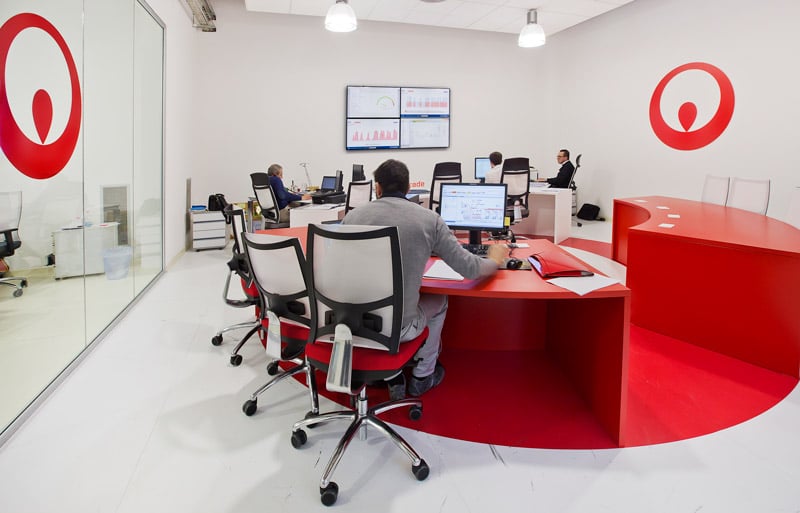Data analytics is transforming facilities management (FM), making it possible to capture more granular information on buildings, systems and equipment. Thanks to advances in everything from sensors to cloud computing, facility managers now have better tools to save energy and money.
State-of-the-art cyber tools enhance security. Advanced sensors heighten tenant comfort. New smart building technologies also make it possible for facility managers to better their space utilization and increase occupant engagement. And improvements to familiar technologies, such as lighting and building management systems, help instill confidence in advanced controls, paving the way for wider market acceptance of today’s new tools.
Given these and other opportunities available to you, how do you decide what’s right for your building? The series of steps below can help facility managers realize the full potential of FM investments.
Step 1: Align Goals and Metrics
Consider existing technologies and practices
- What systems are already in place?
- Do they talk to one another?
- What is the purpose of each of those systems?
- Do the goals of those systems overlap?
Making an effective choice requires a clear vision of intent. After assessing the current landscape, the best next step would be to build a strategy by listing the problems to solve and the goals to achieve. This can help tailor a solution to fit an organization’s strategic needs and steers the organization away from solutions that are not applicable.
For example, start with a simple goal, such as intelligently managing energy to reduce utility bills. This could create a baseline for the next step: determining how to measure your return on investment (ROI).
Alternatively, your organization might target cost savings within five years, or emissions reductions by a certain date. For either goal, you should establish a baseline data set before the new program begins.

Step 2: Collect Data and Account for the Human Element
Strategic goals and benchmarks to measure progress and ROI should inform how an FM technology is designed and set up. These considerations – strategy, ROI and benchmarks – enable the next step in assessing smart building technology investment: data collection. Specifically: what data do you need and how will it be collected?
Consider how facility staff will collect data, the tools they will use to analyze the data, and the actions they will take based on data-driven recommendations. Assess the state of in-house resources in light of objectives.
- Is there enough in-house staff to operate and maintain the new systems?
- How will staff receive training?
- Will they need periodic training refresher courses?
- Who will perform the analysis on the data collected?
- Who will take action based on the analysis?
- What outside support might they need?
As important as strategy and data are to an FM investment, considering the human element is just as important.
Step 3: Navigating the Models
Different firms have different FM needs, and they often have varying levels of technological capability and sophistication, as well as different levels of available capital. The question about the type or level of FM technology to embrace is not a one size fits all decision. Customer choices range from a straightforward technology purchase, with a minimum level of training and support, to subscription agreements and performance-based contracts.
Energy as a Service
Under an energy-as-a service model, an organization outsources the management of one or more energy processes (such as energy strategy, procurement, data management and asset management) to a third-party provider. The customer pays a monthly service fee, which often is less than the level of energy savings obtained from the services, creating a net gain.
The energy-as-a-service model removes the need for an up-front capital investment, some or all of the responsibility to maintain and repair the technology, and some of the risk that the technology may become obsolete during the term of the contract. Often the service provider will guarantee specific outcomes, such as the performance of the asset or even the cash flows from expected cost savings, for the duration of the contract.
Asset as a Service
A variation of energy-as-a-service is the asset-as-a-service model. Instead of a service, an organization rents building equipment (such as lighting) or pays for specific outputs, rather than paying the full price for the equipment upfront. Often a service provider will guarantee the performance of the asset for the duration of the contract.
Service Level and Performance Based Agreements
As attractive as the as-a-service model is for some, it may not be suitable for everyone. Firms with robust in-house capabilities may prefer full control over the asset and ownership of the cash flows.
In the simplest terms, a performance based or Service Level Agreement could be the actual ROI, determined by the cost of the program and expressed in terms of simple payback, net present value, or an internal rate of return. If your contract calls for reducing utility costs, you could structure the metric as the realization of a designated percentage of savings compared with an established baseline over a set time frame.

Step 4 Partnering for Performance
The final step, finding the right partner, could be the most important consideration when it comes to driving performance and results from FM technologies.
The right partner must have the technical ability, or range of abilities, to understand and explain the software being deployed. They should also bring project management skills to the table. An FM technology installation often involves many moving parts and requires the integration of several, disparate systems.
It may be tempting to approach an FM technology installation or upgrade as a standard equipment purchase, but with any technology investment, you are entering into a partnership. FM software must be integrated into a matrix that includes other operational controls. In addition, FM applications, like all software, require regular updates to perform at optimum levels. Due diligence of a partner should go beyond the scrutiny given to a technology purchase.
Two key things to consider:
- What is the potential partner’s specific expertise?
- What is their track record?
Lack of in-house expertise represents a chief reason technologies fail to fulfill their potential. This may be due to a lack of expertise in running FM applications, performing the analysis needed to derive useful insights into FM performance or a lack of overall staff bandwidth.
Before investing in FM technology, consider forming a partnership with an organization that can deliver both technology and the support in a single package, helping alleviate those potential barriers and can move you closer to achieving return on investment.



